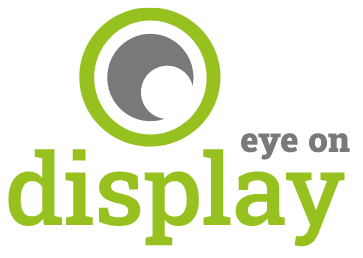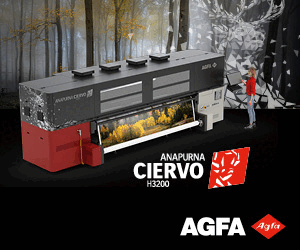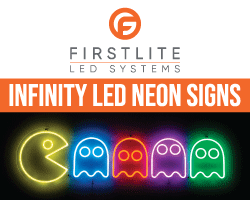As the signage market evolves, it will surprise no-one that printed signage faces increased competition from digital technologies.

This challenging environment and market factors such as post-Coronavirus recovery have contributed to the global market for printed signage experiencing contractions, says Smithers’ The Future of Signage in a Digital World to 2028.
However, analyst data goes on to indicate a positive future. Printed signage will see growth between now and 2028, with the market still worth as much as $41.4 billion and representing 10.4 billion square metres. And Europe continues to have a healthy share with 19% of the global value and nearly 15% of printed area.
These are among the reasons many innovative operations can see the fresh opportunities this market presents that could help them successfully expand their service offering.
Among the performance benefits that ensure printed signage remains widely used for indoor and outdoor advertising, as well as Point of Purchase, are its:
- Cost-effectiveness and speed – this is particularly when compared to advertising channels such as television and radio advertising.
- Durability – making it ideal for locations where vandalism is more likely to occur. A damaged poster is easier, faster, and cheaper to replace than a digital display.
- Ease of dismantling and disposal – in Europe, cardboard and paper is recycled with wastepaper and there are many ways to recover textile and foil printed signage.
- Enablement of efficient mounting – especially if there are frames already installed on site. Also, there is no requirement for power or internet connections or specialist staff.
- Familiarity – that can be reassuring. People with special needs, such as the visually impaired, or passersby with attention deficit disorders, prefer static content.
- Interactivity – printed QR codes offer easy access to websites.
Among the opportunities continuing to contribute to this positive outlook are:
Customisation for printed signage in retail increasing – Today’s competitive retail landscape drives the development of new ways to attract customers and enhance brand recognition. Printed signage is a powerful marketing tool that engages effectively with target audiences and drives footfall to physical stores. Vibrant and eyecatching, it can create immersive instore experiences to differentiate, convey promotional messages, highlight product features, and guide visitors to specific areas of interest. Digital print enables offers to be cost effectively and quickly updated and adapted in response to customer demand and seasonal promotions. It can integrate with omnichannel campaigns to reinforce storytelling and branding, too.
Post pandemic return to shows and events – Earlier this year UFI, the Global Association of the Exhibition Industry reported in its Global Exhibition Barometer research that in most markets, in 2023, the exhibition industry fully recovered from the pandemic slump and was set to record the highest ever revenue levels in 2024. Smithers concurred. It said a huge 1,865 million metres squared output of corporate graphics, exhibitions, and trade show materials in 2022 would grow to 1,958 million metres squared by 2028. This buoyant sector is perfectly poised to benefit from the sustainable, customisable, and interactive elements printed signage can deliver.
Embracing embellishments – The pandemic inspired innovation and many businesses diversified into new technologies and revenue streams. Specialists in display graphics and signage were often at the forefront of this transformation. When attention returned to the retail e-commerce sector, the need for standout signage increased as did interest in the role of digital embellishments in capturing consumer attention. A study conducted by Taktiful, found digital embellishment technology accelerated in adoption across various sectors while WhattheyThink! reported 90% of users expressed a positive outlook on their digital embellishment business. The addition of 3D varnishes, textured finishes, and metallics, can create multisensory experiences that attract attention and invite physical interaction – especially as much of the work is one-off, bespoke projects.
Supporting creative signage specialists in their exploration of delivering differentiation, cost effectively, and sustainably, is Ricoh’s portfolio of large format systems that include the roll to roll RICOH Pro™ L5160e Latex extended gamut system with its option of orange and green inks and the RICOH Pro™ TF6251 UV flatbed printer plus roll to roll, with fast drying Greenguard certified inks. There is also the Flora X20 UV flatbed hybrid system that can print both rigid and flexible materials.
And new systems are in development as Ricoh continues to expand its large format and flatbed product portfolio with innovative technologies and applications to support this booming market, as well as other fields such as industrial and CAD, while offering viable alternatives to screen printing.
In addition, versatile software that ensures smooth high quality production includes the modular and scalable workflow solution ColorGATE Productionserver. It manages accurate processing of graphically rich PDF content and reproduction of complex design files. There is also Color-Logic that provides access to 250 accurate metallic colours and simplifies the design and print production process in a fraction of the time and cost compared to traditional print embellishments.
For more on how to transform these opportunities for digitally printed signage into profit generating capabilities, talk to our experts.
See more blogs on Eye on Display here.

















